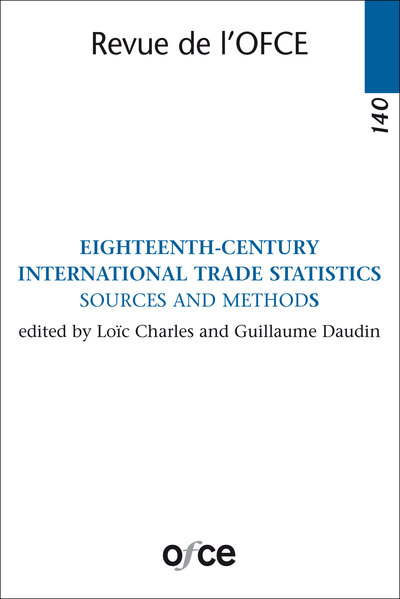Nous utilisons des cookies pour améliorer votre expérience. Pour nous conformer à la nouvelle directive sur la vie privée, nous devons demander votre consentement à l’utilisation de ces cookies. En savoir plus.
N° 140 - EIGHTEENTH-CENTURY INTERNATIONAL TRADE STATISTICS SOURCES AND METHODS
Ofce - EAN : 9782312033785
Édition papier
EAN : 9782312033785
Paru le : 30 juin 2015
24,00 €
22,75 €
Disponible
Pour connaître votre prix et commander, identifiez-vous
Notre engagement qualité
-
 Livraison gratuite
Livraison gratuite
en France sans minimum
de commande -
 Manquants maintenus
Manquants maintenus
en commande
automatiquement -
 Un interlocuteur
Un interlocuteur
unique pour toutes
vos commandes -
 Toutes les licences
Toutes les licences
numériques du marché
au tarif éditeur -
 Assistance téléphonique
Assistance téléphonique
personalisée sur le
numérique -
 Service client
Service client
Du Lundi au vendredi
de 9h à 18h
- EAN13 : 9782312033785
- Editeur : Ofce
- Date Parution : 30 juin 2015
- Disponibilite : Disponible
- Barème de remise : NS
- Nombre de pages : 398
- Format : H:150 mm L:225 mm E:24 mm
- Poids : 610gr
- Résumé : Trade statistics are a unique source to broaden our understanding of early-modern economies and their evolution. Still, they have been under-utilized by researchers. This volume features a detailed panorama of early-modern trade statistics’ sources and discusses some of the ways they can be used to study the transformation of European commerce and economies in the late-eighteenth and early nineteenth century. It is of special interest for both economists and historians interested in the period of the first Industrial Revolution. In this special issue, Loïc Charles and Guillaume Daudin have gathered an wide-ranging list of scholars, experts in the economic history of early-modern trade from several countries. This volume include twenty-three short essays discussing the various available sources on trade data, as well as seven additional research papers. In total, it provides information on thirty five countries or areas. As to the research articles, three of them discuss methodological issues regarding the use of early trade statistics, and the remaining four others actually use some of these trade statistics to produce new insights.


